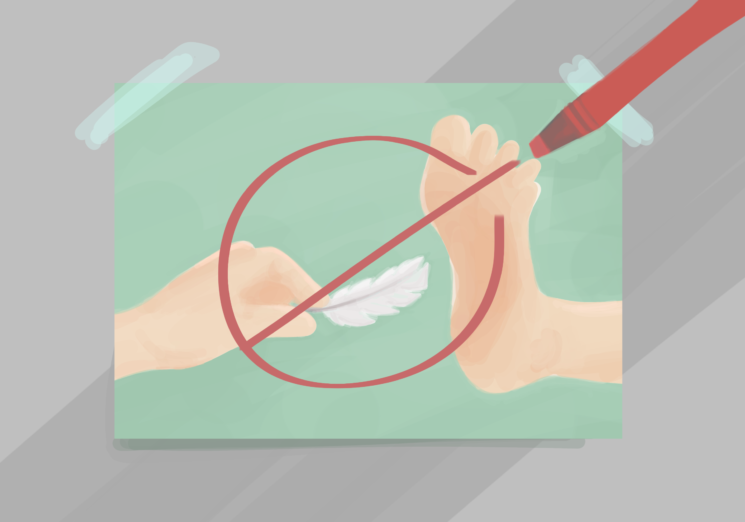
By Myra Chen
Wikipedia defines tickling as a mild sensation that elicits smiling and laughter. Well, it’s not the first time Wikipedia has been wrong about something.
Rather than smiles and giggles, something sinister brews within me when a wandering finger comes in close proximity to my unsuspecting body. Suddenly, nothing is no longer funny. It’s a betrayal that catches you in your most vulnerable moments, a betrayal that should be saved for Shakespeare’s tragedies.
Tickling may not have been included in Shakespeare’s agenda, but it was in ancient mythology. Mahaha is an Inuit mythology demon said to find pleasure in tickling its victims to death with its long bony claws. Its manic giggle and mischievous grin sounds quite familiar in modern times. Sounds like some of you tickle fanatics, doesn’t it?
That’s not all. The Leshy is a demon-god hybrid in Slavic mythology. This trickster spirit doesn’t quite understand boundaries—it imitates cries to lure wandering humans into its forest to “have fun.” But I doubt that being tickled to death, because Leshy doesn’t seem to know when to stop, is fun.
Tickling is only fun for the tickler. For the tickled, the feeling is uncomfortable and enraging. There are two types of tickling: knismesis and gargalesis. Knismesis is arguably worse, like a lingering itch that you can’t quite pinpoint the exact location of. On the other hand, gargalesis is a stronger, pressuring inducing tickle. Both induce involuntary reflexes and that unfamiliar, uncontrolled laughter.
These symptoms made tickling a means of torture in ancient history. Let’s take a trip to A.D. 206, to the time of the Chinese Han Dynasty. Tickle torture was first used because it was visually undetectable. Victims of such torture would have no evidence that any torture was done at all. Usage was spread later to the ancient Romans, who used goats to lick the salt mixture on the soles of criminals’ feet, scraping away layers of skin and flesh in the process.
Eventually, it was discovered that tickling could lead to death. Extended periods of tickling could cause a brain aneurysm, or the swelling of a blood vessel. There are also accounts of death by asphyxiation, where the unrestrained laughter causes deprivation of oxygen in the victim. In other cases, tickling induced life threatening insanity and anxiety attacks.
Tickling is just downright diabolical. It starts as an alluring delight, but it’s a trap for excruciating pain. It’s why we don’t feel ticklish when we tickle ourselves; our brains warn us of the atrocity that is about to come.





